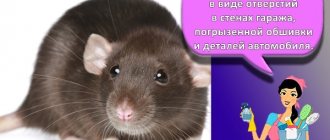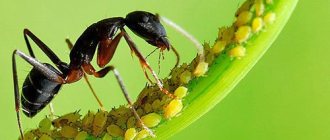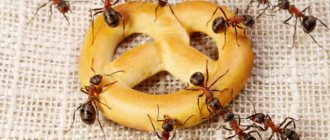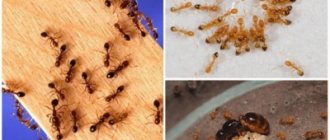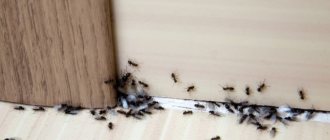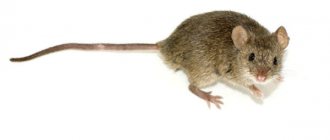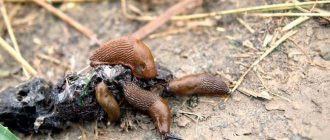“There are crowds of ants rushing around the garden - how many Anteaters does it take to flood everything?” – this cry from the heart of the participants of our portal is ready to support hundreds of thousands of owners of suburban areas in our country. Ants can really cause a lot of damage to your garden; they can also enter the house. We have prepared 10 cards that explain the dangers of ants and how to get rid of them.
What ants can live on the site?
There are about 300 species of ants in the regions of Russia. And the everyday concept of “garden ants” combines several of them. In summer cottages, the black garden ant and the red forest ant are most often found, and the house ant and the yellow garden ant are less common.
Red forest ant
This is a large insect about a centimeter in length. Such ants build huge anthills with impressive underground tiers. Aphids are bred, distributed and protected. They eat flowers of fruit trees and shrubs.
Black garden ant
A small black or dark brown aphid with a body length of only 5 mm, but it is the largest “breeder” of aphids. They can completely destroy seeds in the ground.
Earthen or garden yellow
Also small, up to 0.5 mm long. It does not breed aphids, but feeds on the fruits of fruit trees and berries. They build underground anthills and damage tree roots.
Brownie, aka, pest, aka, pharaohs, aka, ship ant
Having settled on the site, it quickly seeps into the greenhouse, house or outbuildings. Tiny, up to 3 mm long. He eats everything he can get his hands on, from kitchen cupboard supplies to pet food.
Where do ants come from?
Ants are insects that can be found almost everywhere. There is no such garden or vegetable garden that would not be ruled by ants. At the same time, there are several species that most often settle near humans. These include:
- Black garden ants or earthen ants, up to 5 mm in size. They can be either black or brown. They form their nests in the ground or in the root systems of various plants, and they like to breed aphids.
- Red pharaoh ants or myrmica, no larger than 6 mm in size. They are distinguished by a red-brown tint. They can settle not only on a personal plot, but also in a person’s home.
- Red forest ants can grow up to 1.5 cm in length. They form their nests from grass and branches. Females have wings and reach a length of at least 1 cm.
- Red-breasted woodborers prefer to form their nests in tree trunks, in dry stumps, and also in wooden buildings. They can make passages in wood and are capable of turning even logs into dust. They grow up to 2 cm in length.
These insects reproduce quite quickly and are found in all climatic zones. Each nest can accommodate up to 10 thousand individuals, while there is only one queen for the entire nest, which is responsible for the regeneration of the offspring. Working individuals live no more than a month, but the female can live more than a year.
Females with wings, after fertilization, move to other areas, thus expanding their habitat. They lay eggs in the ground, in plant stems, and also under the bark of trees, after which new families are formed. According to this principle, new families are formed in garden plots.
What damage do ants cause to the site, besides breeding aphids?
- Acidify the soil. It is a scientific fact that ants secrete a substance that interferes with the growth and development of plants.
- They damage the root system of plants. The extent of the damage depends on the population.
- They destroy fruits and ovaries with a high carbohydrate content (if the ant population in the area is large, insects begin to feed on sweet fruits and berries), buds and petals of roses and peonies.
- They spoil the seeds and roots of seedlings. If there are a lot of ants on the site, the underground floors of the anthills go wider and deeper, and the ants begin to feed on seeds and roots that are located not far from their home.
- They spread weeds (drag their seeds around the area).
- They steal food products from a person and drag them little by little into their anthill.
Chemical methods for controlling garden ants
The proposed drugs are often very poisonous and can harm not only plants, but also you and your loved ones, especially children, as well as pets. Therefore, the use of drugs is accompanied by a certain risk and requires careful adherence to precautions. Well-known chemicals are made mainly on the basis of two substances: Chlorpyrifos and Diazinon. Such drugs are commercially available in the form of liquid, gel, powder or granules.
- Ant-eater. It has a strong contact and intestinal effect. Leads to the death of pests (adults and larvae) 1.5-2 days after treatment. A 10 ml ampoule is enough to water an area of 50 m2. Retains its protective properties for up to 3-4 weeks.
- Insecticidal powders and granules: Bros, Delicia, Thunder-2, Medvetox, Ant, Anti-ant, Phenaxin. I have personally used Phenaxin several times and shown a good effect, although manufacturers do not position it as a remedy for ants in the area.
- Insecticidal gels. Easy to use and quite effective. Feeding on the “tasty” poison that the gels are made of, the pests themselves die and manage to bring the poison to the anthill on their paws, eventually killing other insects and even the main female.
- Typically, complete destruction of small arthropods occurs within a period of 2 to 7 weeks. According to reviews, the best gels are: Great Warrior, Absolute, FAS, Raptor. Sturm insecticidal paste shows good results.
Photo: Chemical bait for ants
How and why do ants breed aphids?
Aphids have thin skin, they constantly evaporate moisture, and are forced to continuously suck sap from plants. And just as a cow produces milk, aphids produce honeydew, which ants simply adore. Therefore, they care for aphids as if they were their pet: they transfer them to new, young and succulent plants, protect them from ladybugs and other entomophages, and take them to their anthills for the winter.
Ants in the garden: is it worth getting rid of them?
Ants, spreading throughout summer cottages and garden plots, cause gardeners a lot of problems. There are plenty of anti-ant agents in agricultural stores, but whether it is worth using poisons that kill all living things against these insects is a matter of debate.
Benefits of ants
Ants are part of the ecosystem, so you can always find benefits in their presence:
- Where families of ants live, the soil contains twice as much potassium and ten times as much phosphorus. These elements are in a form that is easily digestible by plants.
- Ants eat other insects, including many pests.
- By moving around plants and their flowers, ants become excellent pollinators.
- By constructing underground dwellings, ants loosen the soil - plant roots receive more oxygen.
It is believed that ants serve as food for birds that destroy pests in gardens and vegetable gardens. In fact, birds are only interested in small brown ants - they are also called “forest orderlies.” Moreover, they do not eat these ants, but use them to get rid of parasites.
Harm of ants
As we see, there are benefits from ants, but there is much more harm:
- Anthills are often located among the roots of plants. Both garden plants and trees suffer from the activity of ants. Ants often chew through roots, causing plant death.
- Branched tunnels dug by ants disrupt the thermoregulation of the soil and prevent the uniform distribution of fertilizers.
- Anthills damage the integrity of flower beds and beds and destroy wooden buildings.
- Insects actively move around plants; they often eat buds, harming their decorative properties.
- Ants contribute to the spread of aphids, a dangerous insect that can destroy any plant. Aphids not only drink the juices of garden crops, but also spread viral and fungal diseases.
- The inhabitants of anthills love to eat sweet berries and fruits; the proximity of anthills has a catastrophic effect on the quality and quantity of the harvest.
- These insects, dragging seeds into their storehouses, are active distributors of weeds.
What is the best ant repellent?
Boric acid. Based on it, many baits are made with which the ants treat the queen, and thus the colony of ants not only moves to another place, but dies.
In the doses used for ant baits, boric acid is absolutely harmless to humans, animals and plants. Most good and expensive ant repellents from the store are made based on it.
In second place in terms of effectiveness is ammonia, but not ammonia, but ammonium chloride NH4Cl.
It is harmless for people and a nitrogen fertilizer for plants. Sold in radio and electrical goods stores.
But they say you can kill ants with yeast?
This is also a very good way:
- Finely chop the briquette of raw yeast,
- put sugar in them “volume by volume”,
- pour warm, but not hot water,
- mix,
- place saucers with this treat near the “ant points”.
The ants will be happy, grateful and will quickly drag the treat inside their nest, to other sweet supplies. And then the yeast will begin to ferment and destroy all the ant food. After this local humanitarian catastrophe, the colony will die out.
Is it possible to get rid of ants in your summer cottage with a soda solution?
No. But their numbers can be reduced. The ants will most likely leave this place, but will settle in another. But try it if you want: pour 2 tablespoons of baking soda into a regular 1.5 liter plastic bottle, fill it to the top with hot water, and shake until the soda dissolves. Pour the entire bottle into the “ant point” and cover it with sand on top. You can simply sprinkle the ant areas with soda, or soda mixed with mustard powder. Upon contact with soda, the ants die.
How to drive ants out of a greenhouse?
This is a difficult task; The greenhouse is usually inhabited by brownies, also known as Pharaoh's ants, the most tenacious and cunning. To solve it, you need:
- Find the entrances to the ant nest (track the ants along the paths). The entrance will be under the heating pipe or irrigation system, at the frame rack, etc.
- Take a piece of natural felt (ideal) or any moisture-absorbing fabric (good) the size of a small plate.
- Put on a respirator, safety glasses and drip ammonia from the bottle onto the felt or cloth to completely wet them.
- Place it at the entrance to the anthill, cover the top with a piece of polyethylene. Keep windows and doors to the greenhouse open.
- If necessary, repeat treatment after two weeks.
conclusions
The main thing in the fight against ants on the site is consistency (they will return and you will have to start all over again), integrity (there should be only one owner on the site) and an understanding of how the ant family works. We do not recommend practicing methods that simply drive ants away from the site. It is important to destroy the queen, and then the ant colony will come to an end. The FORUMHOUSE consultant, an agronomist with the nickname Sodmaster, also thinks the same.
Sodmaster
Destruction of ants is of no use if the queen is alive, which in a short time can give birth to a new retinue. The queen does not feed herself; she is fed by worker ants. Now, if you add poison to what they feed her and kill the queen, then the worker ants will scatter or die, deprived of leadership and a national idea. Gel and poisoned baits work precisely on this principle. Ordinary boric acid with sugar syrup does not kill immediately - the ant manages to bring the “delicacy” to the queen, who, having got drunk, dies in agony.
There are quite a few ways to fight ants, and each case has its own. All of them are discussed in our forum thread “How to get rid of ants-2”. Find out how to get rid of ants in your home. Read our article about how ants can be not only enemies, but also helpers for the gardener. Watch a video about how to set up a light garden in which even pests will not particularly bother the plants.
How to deal with ants on trees in the garden
The barrier method will help protect trees from ant invasion. The easiest way involves using crushed chalk, which is scattered around the trunk. Particles of the substance stick to the legs of insects, preventing them from climbing the tree.
Even if the ants begin to move along the bark, they will soon fall down. Tree trunks are also capable of protecting peculiar “skirts” made of foil, which will serve as an obstacle to the movement of insects.
A more complicated method involves using an old car tire, cut into 2 parts. A ditch is dug around the tree, into which half of the tire is placed. Then fill the tire with water. Ants are unable to overcome the water obstacle, so the fruits on the trees are reliably protected.
